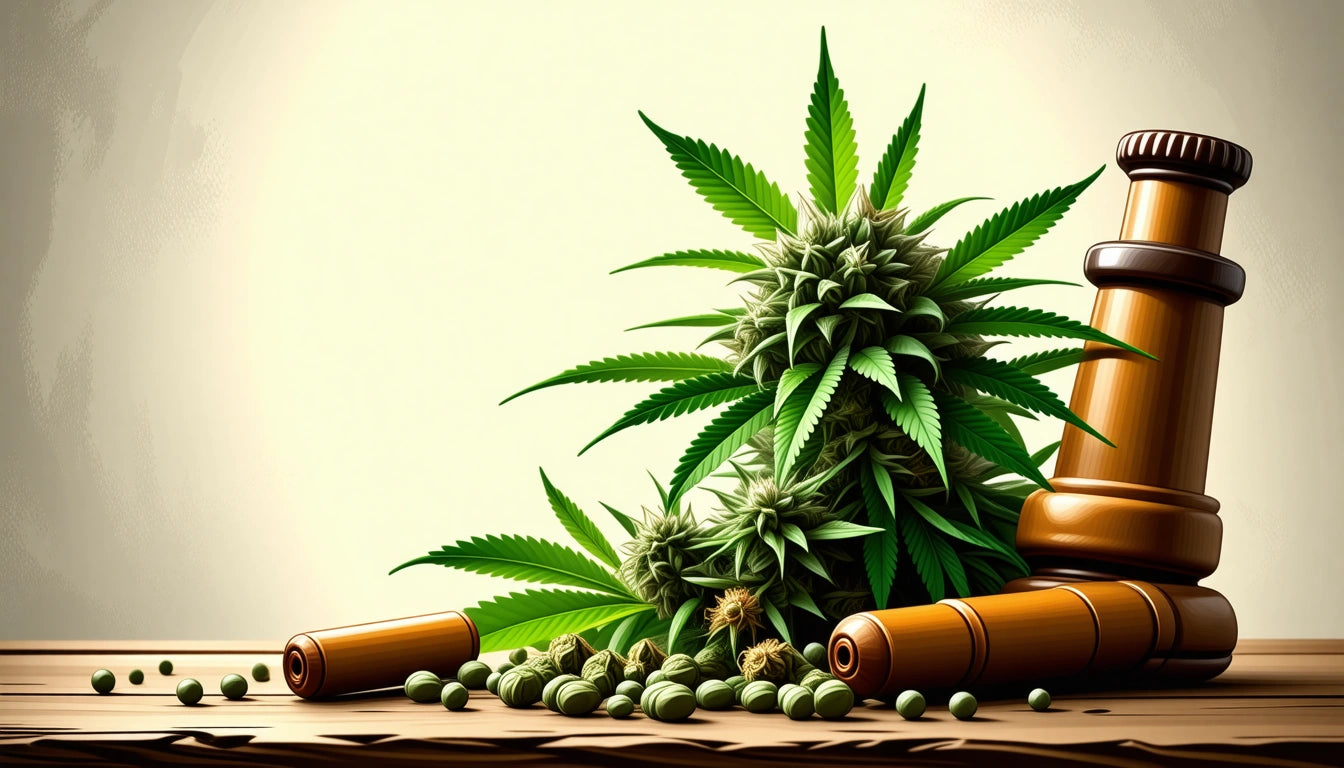Table of Contents
The Discovery and Origins of Cannabis: A Historical Overview
The question of who discovered marijuana has fascinated historians, botanists, and cannabis enthusiasts for generations. Unlike modern innovations with clear inventors, cannabis has no single discoverer but rather a rich history of human interaction spanning thousands of years. This exploration into when cannabis was first discovered reveals not just a plant, but a complex relationship between humanity and one of our oldest cultivated companions.
Ancient Origins: When Was Cannabis First Discovered?
Cannabis was first discovered approximately 12,000 years ago during the Neolithic period, making it one of humanity's oldest cultivated plants. Archaeological evidence suggests that early humans in Central Asia, particularly in regions that now include modern-day China, Mongolia, and southern Siberia, were the first to recognize and utilize cannabis.
The earliest concrete evidence of cannabis use comes from Taiwan, where archaeologists discovered hemp cords used in pottery dating back to 10,000 BCE. This finding suggests that the first applications were likely industrial rather than medicinal or recreational. These early cultivators would have selected plants for their strong fibers, gradually domesticating wild cannabis through selective cultivation.
Early Civilizations and Cannabis: Where It Was First Found
The question of where cannabis was first discovered points to Central Asia as the plant's geographical origin. From this center, cannabis spread through human migration and trade networks. By 6000 BCE, cannabis had reached China, where some of the earliest written records of its use appear.
Key Archaeological Discoveries
- Chinese tombs containing cannabis seeds dating to 8000 BCE
- Hemp fabric remnants from 6000 BCE in China
- Cannabis residue in braziers from 2500 BCE in the Pamir Mountains
- Cannabis pollen in Egyptian mummies from 950 BCE
One of the most significant early documentations comes from the Chinese pharmacopeia, the Shennong Ben Cao Jing, compiled around 2700 BCE. This text details cannabis use for rheumatism, gout, and other ailments, providing insight into how ancient people understood the plant's properties.
Historical Uses and Cultural Significance
The history of marijuana reveals diverse applications across ancient cultures. Initially valued for its strong fibers, cannabis became an integral part of early textile production, with hemp ropes and fabrics appearing throughout Asia and later Europe.
Beyond industrial uses, cannabis played significant roles in:
Medicinal Applications
Ancient physicians across multiple civilizations documented cannabis in their medical texts. In India, cannabis was mentioned in the Atharva Veda (1500 BCE) as a sacred plant that relieved anxiety. Egyptian medical papyri recommended cannabis for inflammation and various ailments.
Spiritual and Recreational Use
How cannabis was first discovered to have psychoactive properties remains unclear, but by 2000 BCE, there's evidence of ritualistic consumption. The Scythians, nomadic Indo-European peoples, used cannabis in funeral ceremonies, burning the seeds and flowers in ritual braziers. This practice was documented by the Greek historian Herodotus in the 5th century BCE.
In ancient India, cannabis became incorporated into religious practices, particularly associated with the god Shiva. The plant was used in the preparation of bhang, a traditional edible still consumed during certain Hindu festivals today.
The Global Spread of Cannabis
Following its early discovery and cultivation in Asia, cannabis spread along human migration routes and trade networks. By 2000 BCE, cannabis had reached the Middle East and Africa, spreading further into Europe with the Scythian migrations.
The Romans utilized hemp extensively for industrial purposes, including ship sails and ropes. During the Middle Ages, hemp became a critical crop across Europe, with some kingdoms mandating its cultivation for naval supplies.
Cannabis arrived in the Americas much later, brought by European colonizers primarily for hemp production. In the 1600s, hemp cultivation was required by law in several English colonies. Who first discovered cannabis's psychoactive properties in the Western Hemisphere is not clearly documented, though its medicinal applications were recognized by the 1800s when it appeared in Western pharmacopeias.
Modern Rediscovery and Scientific Understanding
The modern scientific understanding of cannabis began in the 19th century. In 1839, Irish physician William O'Shaughnessy published one of the first Western studies on cannabis's medical applications after observing its use in India. This work introduced cannabis to Western medicine, where it was prescribed for various conditions until the early 20th century.
The pivotal scientific breakthrough came in 1964 when Israeli researcher Raphael Mechoulam isolated and synthesized THC, cannabis's primary psychoactive compound. This discovery opened the door to understanding the endocannabinoid system and cannabis's complex interaction with human physiology.
Through these scientific advances, we've gained insight into what the origin of cannabis means biologically. Botanists now classify cannabis as belonging to the Cannabaceae family, with ongoing debate about whether it comprises multiple species or a single highly variable one.
Historical Impact and Future Preservation
The discovery and spread of cannabis represent one of humanity's longest relationships with a cultivated plant. From its origins in Central Asia to global cultivation, cannabis has influenced agriculture, medicine, spirituality, and culture across civilizations.
Today, as we witness shifting attitudes toward cannabis, understanding its historical context becomes increasingly important. Archaeological discoveries continue to refine our knowledge of when and how cannabis was first discovered, while genetic research helps trace its evolutionary path alongside human development.
The preservation of cannabis's genetic diversity and historical cultivation knowledge represents an important scientific and cultural heritage. As modern societies develop new relationships with this ancient plant, the full story of who first discovered cannabis and how it shaped human history continues to unfold through interdisciplinary research.











Leave a comment
All comments are moderated before being published.
This site is protected by hCaptcha and the hCaptcha Privacy Policy and Terms of Service apply.